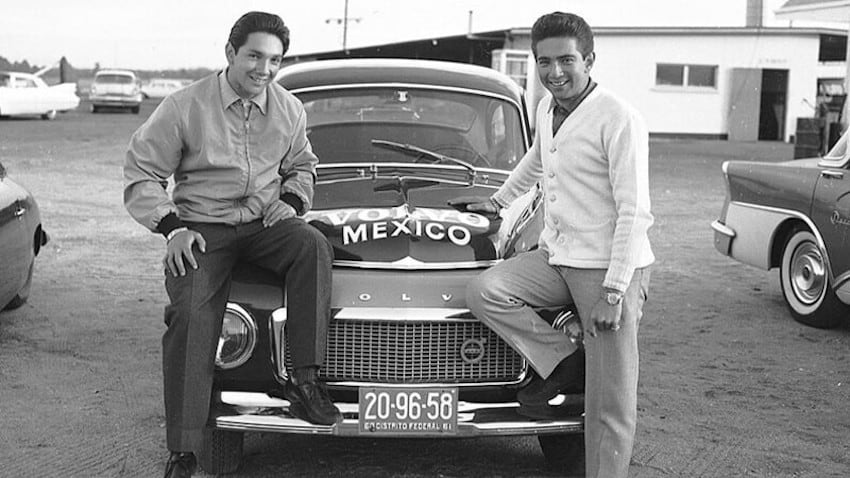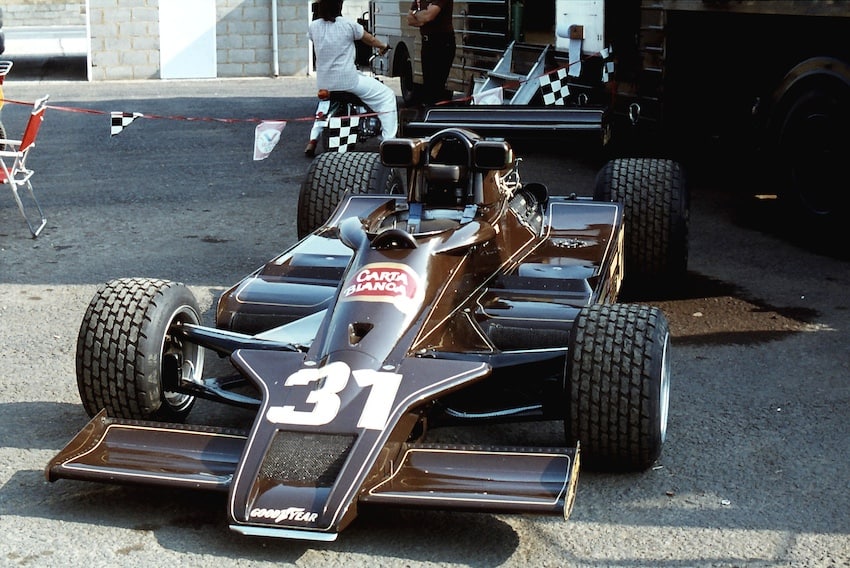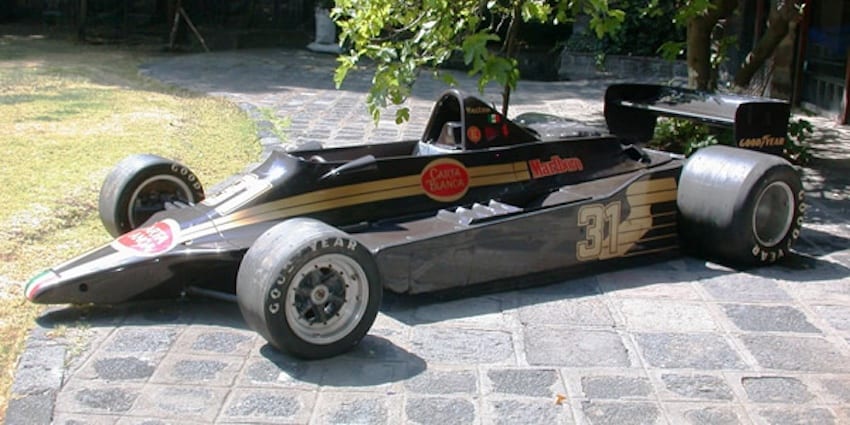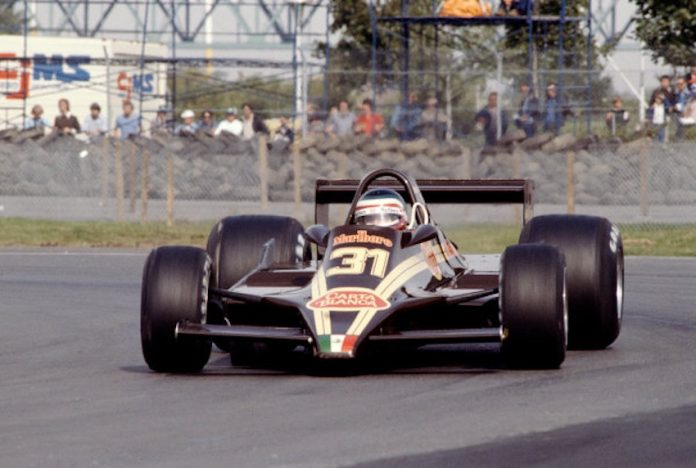The modern world of Formula One is a super corporate, high-spending, ultra-glamorous one. Millions of viewers from around the world tune in to watch their racing heroes — including Mexico’s Sergio “Checo” Perez and his Red Bull Racing team — as expertly engineered machines rally against hundredths of a second.
Fifty years ago, however, the top level of global motorsport was a very different place.

This was the era of the brave gentleman driver, a man from another time making his way in very different world. Sometimes these drivers would appear at one-off races, building their own cars from kits. Fancying themselves a designer, they would pioneer what they believed to be the next big concept in racing (it usually wasn’t). Many raced simply for the pleasure of speed and a desire to compete with the best, and had the deep pockets to do so.
Their names are etched into Formula One history — Jim Clark, the Scottish farmer many believe to be the greatest ever to race in the sport; Graham Hill, the master of Monaco; Rob Walker, the heir to the Johnnie Walker whisky fortune who listed his occupation only as “Gentleman;” and Al Pease, the only driver ever to be disqualified for driving too slowly.
The last of these great sporting amateurs was Hector Rebaque, the chilango son of an architect. Family money made it easy for him to enter the 1973 24 Hours of Daytona aged just 18. Modest sportscar success followed, and in 1974, he and fellow Mexican Guillermo Rojas entered their own car — a Porsche Carrera — as the Rebaque-Rojas racing team.
Not satisfied with simply racing sportscars, Rebaque set his sights on the ultimate motorsport series – Formula One. His timing couldn’t have been better.
Mexico in Formula One
The first Mexicans to race in Formula One were the Rodríguez brothers — super talented Ricardo and successful race-winner Pedro — but both were tragically killed early in their careers: Ricardo at the very first Mexican Grand Prix in 1962, and Pedro in Germany in 1971. Their deaths rocked the world of Mexican sports, and the public searched for another driver with the talent to represent Mexico on the world stage. Moisés Solana had valiantly tried to fill this gap, but his efforts in the top tier of motorsport had come up short. Mexico needed winners.

It was under these circumstances that Hector Rebaque first came to Formula One. He had found himself a spot on the Hesketh racing team — best known for the playboy lifestyle of its owner and drivers, including the famous James Hunt. It was the ultimate privateer team for the ultimate privateer driver.
There was just one problem: Hesketh wasn’t very good. The car was slow, the team had no money, and the owner, Lord Thomas Hesketh, prioritized a life of vice over racing success. In true Mexican spirit, however, Rebaque had an incessant drive to succeed, and set out to reach the top any way he could. It was time to start his own Formula One team, and run things his way.
Mexico’s first Formula One car
Formula One teams are almost always based in the United Kingdom (with a few notable exceptions, like Ferrari), so founding and operating Team Rebaque was going to require setting up shop outside of Mexico.
That didn’t mean the DNA of the team had to be foreign, however, and the team earned sponsorship from a number of Mexican brands. The title sponsor was brewery chain Moctezuma (under their Carta Blanca label). Further support came from Domecq wines and a long-standing partnership with Café de México, which gave the team the funding they needed to get started. Other Mexicans on the team included Hector Rebaque Sr., Hector’s father, and Chacho Medina, who would go on to become the voice of Mexican motorsport commentary.

The Rebaque team had a lot of spirit, but it didn’t have a lot of money compared to the major players of the time. At the other end of the title race, Mclaren turned over £2.25 (US $2.8 million) in 1980 alone, equivalent to £9.7 million (US$ 12.2 million) today).
Given the team’s financial limitations, the Mexican Formula One dream began in the back of a garage in Leamington Spa, a charming market town on the outskirts of Birmingham. In a feat of outstanding negotiation, Rebaque arranged for the team to buy the revolutionary Lotus 78, which had won the World Championship the year before, outfitting it with the privateer’s engine of choice — the Cosworth DFV.
Hector ran the team, the office, served as a mechanic and acted as its only driver. Over the course of two full seasons, he raced in 30 Grands Prix across four continents. He arranged sponsors, worked on the car, and negotiated with suppliers.
The first season ahead of the 1978 World Championship was slow. The huge number of entries during the early years of Formula One — when drivers could enter their home Grand Prix for a single race — meant that it was often necessary to “pre-qualify,” a step which meant many new teams faced extreme pressure to even make it into the event itself. This didn’t stop Rebaque, who managed to qualify for nine of the 16 events in his first season.
Real success came in the German Grand Prix that year, when Rebaque took his car from 18th place on the grid to a 6th-place finish and scored the first points for Team Rebaque. The enormous achievement put the team on the map, and the future looked bright for the Mexican privateers battling for racing glory.
But Rebaque had even larger plans. He commissioned Geoff Ferris and John Barnard to build him the Rebaque HR100 — Mexico’s first (and so far, only) Formula One car. Designing and building a car from scratch isn’t easy, especially when you run your team in the back of an industrial estate, and it took some time for the final designs to be signed off on and prepared.
Sponsor pressure for the new car was huge — Mexico’s first Formula One car was a sporting achievement, and supporters wanted to see what Rebaque had created. As a result, the car was rushed out for the Dutch Grand Prix at Zandvoort, perhaps a little earlier than it should have been.

Unfortunately, patriotism, spirit and courage can only take you so far. The car was not especially fast, and it failed to qualify for three of the four races in which it was entered, retiring after its one race day outing in Canada.
After Formula One
Under modern scoring rules, Team Rebaque would have been a decent success, with enough points to attract the necessary sponsorship to continue. Unfortunately, the points system in the 1970s was much less forgiving — but Team Rebaque retains the distinction of being a points-scoring team nonetheless, something which only a handful of racecar constructors can say they have achieved.
Much like Checo Pérez some 40 years later, Rebaque managed to do well enough to secure a drive with a top team — and he headed to Brabham. While he picked up some points finishes, he finished a distant 10th in his only full season with the team, while his teammate Nelson Piquet won the title in the same car.
Rebaque was well enough regarded, and his efforts were rewarded in 1982 with an offer to join the Arrows team. Still, he chose to look to new pastures for the rest of his career.

He headed to the United States and bagged a win at Road America in his only season with the #52 Carta Blanca car. He also finished in the top 15 in the Indianapolis 500 that same year.
Today, Rebaque is an architect, like his father. The HR100 can be found at his home, serving as a garden ornament.
By Mexico News Daily writer Chris Havler-Barrett
